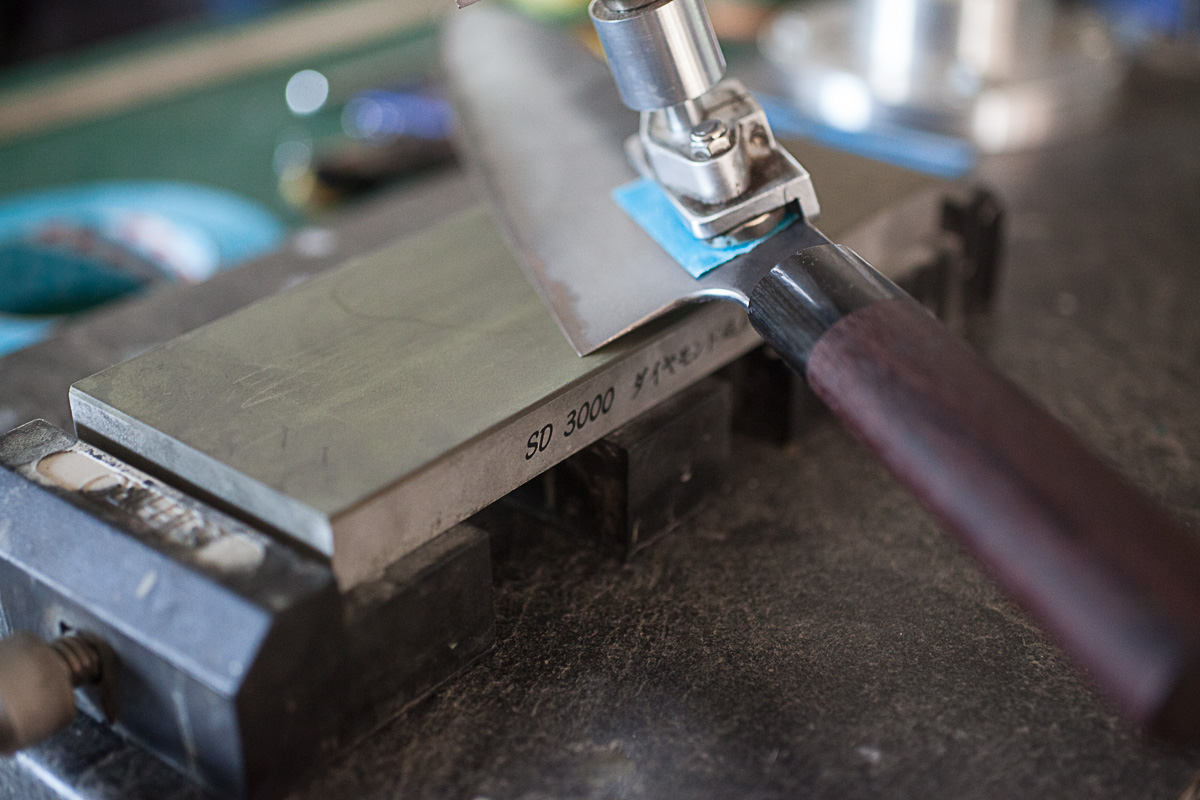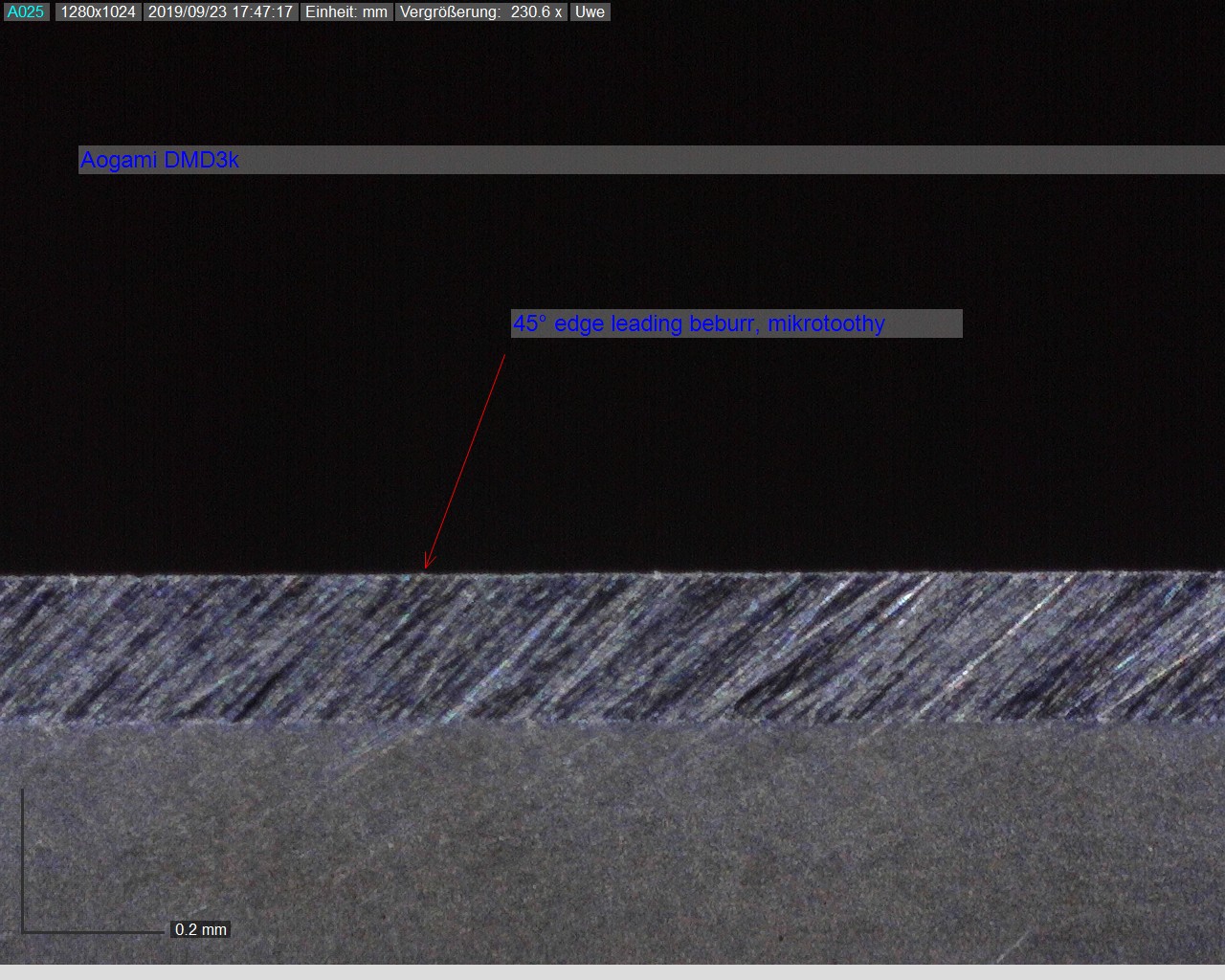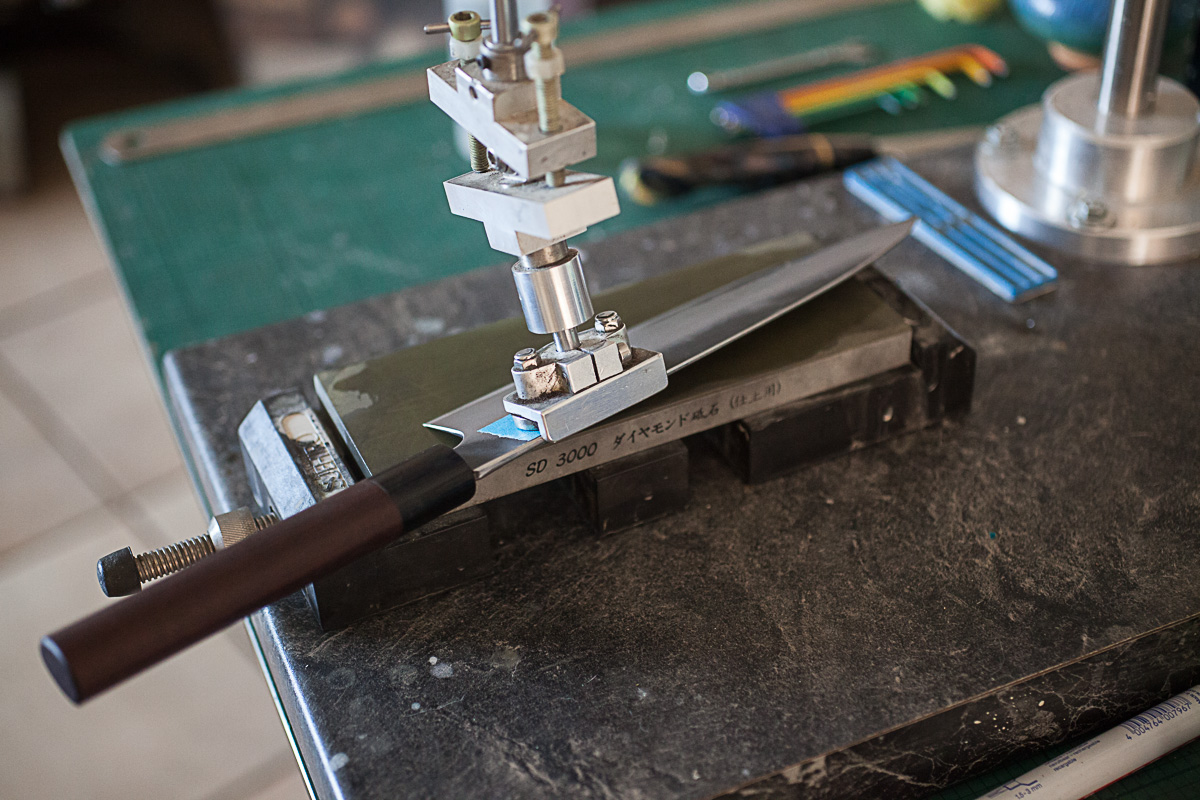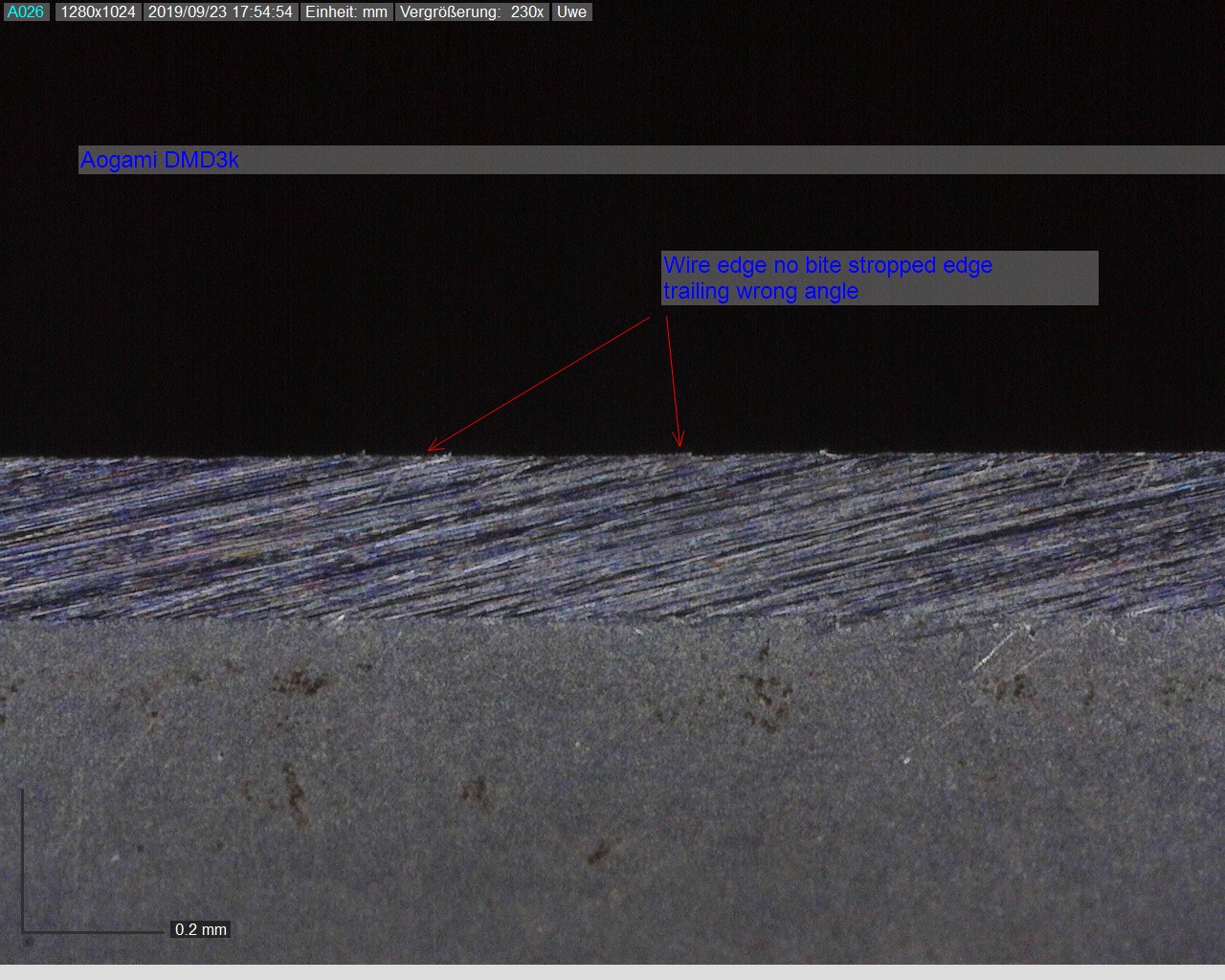This thread is pretty amazing, and there is a great deal of talent here. What intrigues me is how the sharpening of a blade, which should be a science, is instead really an art. It is an art because the craft of freehand sharpening goes way back, many thousands or tens of thousands of years I think, and is handed down to us as a freehand skill that has maintained the great feature of man's pride in manual skillfulness, a feature that too few pursuits in our world still have. Fine sharpening is an art that results in an edge so magnificently sharp we cannot even see it, an edge that might shave the delicate hair of a princess or cut off a man's head in one quick swipe. I, too, undertake freehand whetstone sharpening, and it is an enjoyable exercise, relaxing for the mind, pleasantly repetitive motions and sounds, and I take pride in my razor edge when I achieve it. Even if I decapitate no higher being than a fish.
But it should be a science, or at the least, the art of hand sharpening ought to be better informed by science. I mean, what is the consistently best way to achieve a hard and sharp edge, what is the surest way to gauge knife sharpness, what does that burr look like up close as it's coming off the edge, what does that freshly deburred edge really leave behind? Is deburring always necessary? Does the burr actually come off in long metal hairs? Is it really possible to deburr by simply grinding it into dust by leading strokes? I would love to see slow motion video-microscophotography of a knife edge during sharpening. I'm sure that is somehow possible, though it might require such sophisticated methods as would require the expertise of the MIT Media lab. It ought to be done such that the camera is affixed to the blade and can focus on the edge with great magnification, while the blade is put through its paces by a master sharpener, and then edited to show us what is really going on down there. (Maybe though such a video already exists?)








